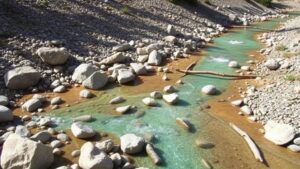Spotting Old Mining Indicators in Remote Areas for Potential Claims
Spotting Old Mining Indicators in Remote Areas for Potential Claims
Identifying old mining indicators in remote areas can be a crucial step for prospectors and mining enthusiasts looking to stake new claims. By understanding the various signs of past mining activities, individuals can glean insights into the mineral potential of an area. This article outlines key indicators, methodologies for spotting them, and the implications for modern mining efforts.
Understanding Old Mining Indicators
Mining indicators are remnants or signs that suggest previous extraction activities have occurred in a given area. e signs often point toward the mineralization processes that may still exist beneath the surface. Some common indicators include:
- Mine shafts and adits
- Tailings piles and waste rock dumps
- Old equipment and structures
- Changes in vegetation patterns
Recognizing these features can guide modern prospectors toward areas with historical significance, enhancing the chances of discovering valuable minerals.
Methodologies for Spotting Indicators
Effective spotting of old mining indicators involves a combination of fieldwork and research. Here are some essential steps:
- Map Research: Use historical mining maps and geological surveys to identify areas of past activities. Sources like the U.S. Geological Survey offer extensive records.
- Aerial Imagery: Leverage satellite imagery and aerial photos to visualize landscape changes indicative of mining operations.
- Field Inspection: Conduct on-the-ground assessments to look for physical signs. Be methodical; bring tools like GPS devices, compasses, and field guides.
For example, the state of Nevada provides access to archives of mining activities, which can significantly aid in narrowing down potential claim locations.
Case Studies: Successful Identification
Several prospectors have successfully identified old mining indicators leading to productive claims. One such case is the discovery in the historic mining town of Virginia City, Montana. Here, tailored aerial surveys highlighted abandoned sites where tailings and waste dumps were located. Modern geochemical assays conducted later revealed significant silver deposits, resulting in lucrative claims for the prospectors involved.
Challenges Faced When Spotting Indicators
While spotting old mining indicators can be fruitful, challenges are also present. e can include:
- Overgrowth: Vegetation can obscure old mine sites, making them difficult to identify.
- Environmental Regulations: Many areas are subject to land-use restrictions which must be adhered to before stake claims.
- Weather Conditions: Remote locations might be hard to access due to weather, especially in regions with harsh climates.
Prospectors must conduct thorough planning and ensure that they are knowledgeable about local regulations and environmental conditions, which can sometimes affect accessibility to sites.
Practical Applications of Old Mining Indicators
Recognizing old mining indicators is not merely an academic exercise; it holds significant practical implications for mineral exploration. By targeting areas where historical mining has already demonstrated a mineral presence, modern prospectors can be more strategic in their exploration efforts.
For example, the presence of tailings piles in an area previously mined for precious metals can indicate potential zones for further mineralization. New technologies such as geophysical surveys and remote sensing can supplement traditional exploratory methods and increase success rates in staking claims.
Actionable Takeaways
To effectively spot old mining indicators in remote areas, consider the following actionable steps:
- Engage in comprehensive map research and utilize digital resources.
- Conduct thorough field inspections armed with appropriate tools.
- Document findings meticulously to support claim applications.
- Stay informed about local regulations and adhere to best environmental practices.
By combining historical knowledge with modern techniques, prospectors can maximize their chances of finding viable claims in areas rich with mining history.


